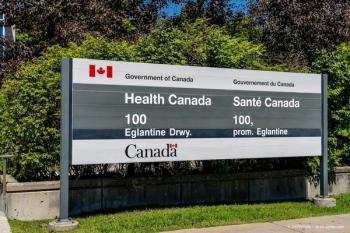
Xibrom useful adjuvant to Lucentis in treatment of AMD
Xibrom (bromfenac 0.09 mg ophthalmic solution; ISTA Pharmaceuticals) significantly improves visual acuity outcomes and lowers retreatment rates when administered as an adjuvant to Lucentis (ranibizumab; Novartis) therapy in neovascular age-related macular degeneration (AMD) patients, when compared with Lucentis monotherapy, according to a poster presented at this year's Annual Meeting of the Association for Research in Vision and Ophthalmology (ARVO).
Xibrom (bromfenac 0.09 mg ophthalmic solution; ISTA Pharmaceuticals) significantly improves visual acuity outcomes and lowers retreatment rates when administered as an adjuvant to Lucentis (ranibizumab; Novartis) therapy in neovascular age-related macular degeneration (AMD) patients, when compared with Lucentis monotherapy, according to a poster presented at this year's Annual Meeting of the Association for Research in Vision and Ophthalmology (ARVO).
Calvin A. Grant, MD, of Oak Lawn and Tinley Park, Illinois, and Cape May Court House and Richland, New Jersey, US, conducted a retrospective case control study comparing the two treatment paradigms over a period of six months.
Two groups of 30 patients each received either Xibrom twice daily in combination with Lucentis or Lucentis only. There were no adverse events related to topical administration of Xibrom. During the study, patients in the combined treatment group required 1.6±0.69 Lucentis injections; patients in the Lucentis only treatment arm required 4.5±0.41 injections. Mean visual acuity improved 1.2±1.64 lines in the combined treatment group, against 0.06±0.66 lines in the Lucentis only group.
The analysis of results from this study supersedes an abstract previously published to accompany this poster, which did not show a statistically significant difference between treatment groups. ISTA Pharmaceuticals has neither announced nor ruled out an intention to pursue a label change for Xibrom.
Newsletter
Get the essential updates shaping the future of pharma manufacturing and compliance—subscribe today to Pharmaceutical Technology and never miss a breakthrough.















































